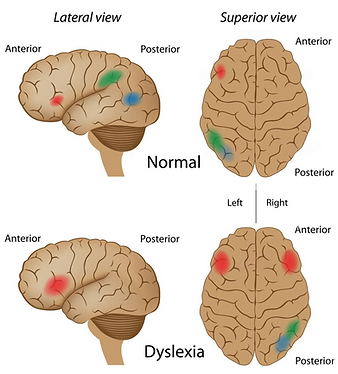Understanding Dyslexia: Causes, Symptoms, and Treatment
- Alan Kuriakose
- Mar 25
- 3 min read
Dyslexia is a common learning disorder that affects a person's ability to read, write, and spell despite having normal intelligence. It is a neurological condition that primarily impacts language processing skills. Understanding dyslexia is crucial for early intervention and effective management. In this blog, we will explore various aspects of dyslexia, including its causes, symptoms, diagnosis, and treatment options.
What Causes Dyslexia?

Dyslexia is primarily caused by differences in brain structure and function. Research suggests that it has a strong genetic component, meaning it often runs in families. Some common factors contributing to dyslexia include:
Genetics: Children with a family history of dyslexia are more likely to develop the condition.
Brain Differences: Studies show that people with dyslexia have differences in brain connectivity and activity in areas responsible for language processing.
Environmental Factors: Prenatal exposure to toxins, low birth weight, or premature birth can increase the risk of dyslexia.
Dyslexia Symptoms
Dyslexia symptoms can vary depending on age and severity. Some of the most common signs include:
In Children:
Difficulty recognizing letters and their sounds
Struggling to learn new words
Frequent spelling mistakes
Slow and laborious reading
Avoiding reading or writing tasks
Trouble following multi-step instructions
In Adults:
Poor spelling and grammar skills
Difficulty remembering names or sequences
Struggles with reading comprehension
Avoiding tasks that require extensive reading
Difficulty with organization and time management
Dyslexia Test: How is Dyslexia Diagnosed?

Dyslexia is typically diagnosed through a series of tests and assessments conducted by specialists. A dyslexia test evaluates:
Reading fluency and accuracy
Phonological processing (understanding sounds in words)
Memory and cognitive skills
Language comprehension and writing skills
If you suspect that you or your child has dyslexia, consulting a specialist for an evaluation is essential. Early diagnosis can help in implementing effective intervention strategies.
Dyslexia Treatment: Is There a Cure?

A common question many people ask is: Can dyslexia be cured? The short answer is no—dyslexia is a lifelong condition. However, with the right support and interventions, individuals with dyslexia can learn to manage their challenges effectively. Treatment options include:
1. Educational Interventions
Structured literacy programs, such as the Orton-Gillingham approach, help individuals with dyslexia improve their reading and writing skills.
2. Assistive Technology
Tools like text-to-speech software, audiobooks, and speech recognition programs can help dyslexic individuals overcome their reading difficulties.
3. Specialized Tutoring
One-on-one tutoring with a dyslexia specialist can provide personalized support tailored to an individual’s needs.
4. Support from Schools and Teachers
Teachers can implement accommodations, such as extra time on tests, alternative assessment methods, and simplified instructions to help dyslexic students succeed.
Dyslexia Examples in Daily Life
Dyslexia affects people in various ways. Some real-life dyslexia examples include:

A child who struggles to spell simple words despite being intelligent and curious.
An adult who avoids reading aloud in meetings due to fear of mispronouncing words.
A student who takes longer to complete assignments because of difficulty processing written information.
Despite these challenges, many people with dyslexia achieve great success in their careers. Famous individuals like Albert Einstein, Leonardo da Vinci, and Steven Spielberg had dyslexia and made remarkable contributions to their fields.
Dyslexia in Children: How to Support Your Child
If your child has dyslexia, early intervention is key. Here are some ways to support them:
Encourage Reading: Use phonics-based reading programs and read with them daily.
Provide Positive Reinforcement: Focus on their strengths and celebrate small achievements.
Use Multisensory Learning: Engage them in activities that involve visual, auditory, and hands-on learning.
Work with Teachers: Collaborate with educators to ensure classroom accommodations and appropriate teaching strategies.
Conclusion
Dyslexia is a lifelong condition, but with the right support and intervention, individuals with dyslexia can thrive in academics and life. While dyslexia cannot be cured, various treatments and teaching strategies can help individuals improve their reading and writing skills. If you suspect dyslexia in yourself or your child, early diagnosis and intervention can make a significant difference. Understanding dyslexia is the first step towards empowering individuals to overcome their challenges and reach their full potential.
.png)



Comments